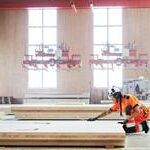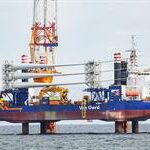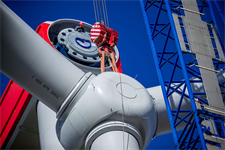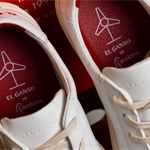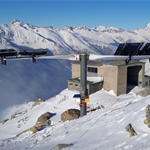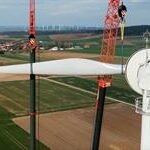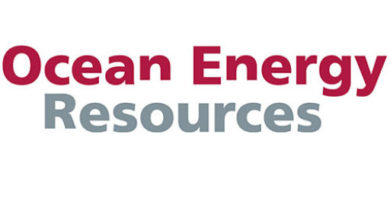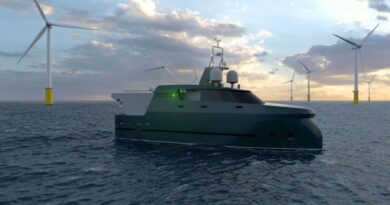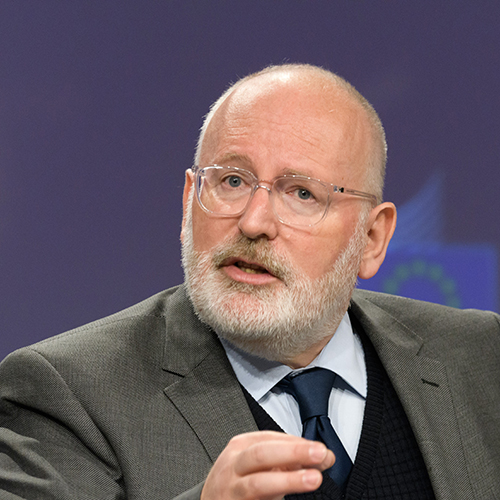Wind industry calls for Europe-wide ban on landfilling turbine blades
Energy Disrupter
Wind energy – decommissioning blades
Today WindEurope called for a Europe-wide landfill ban on decommissioned wind turbine blades by 2025.

Europe’s wind industry actively commits to re-use, recycle, or recover 100% of decommissioned blades.
This comes after several industry-leading companies announced ambitious plans for blade recycling and recovery. A landfill ban would further accelerate the development of sustainable recycling technologies for composite materials.
With today’s call, the European wind industry actively commits to re-use, recycle, or recover 100% of decommissioned blades. At the same time the industry commits not to send decommissioned blades from Europe to other countries outside of Europe for landfilling.
“Wind energy is a green technology. Sustainability is part of our DNA. That’s why we are constantly striving to further reduce our impact on the environment. A ban on landfilling wind turbine blades will help accelerate the development of sustainable recycling technologies. Austria, Finland, Germany, and the Netherlands already have a landfill ban in place. But we call upon the European Commission to propose a harmonised European approach”, says Giles Dickson, WindEurope CEO.
Today the standard lifetime of an onshore wind farm is around 20-25 years. 85-90% of the total mass of a wind turbine can already be recycled. Most of the components – including steel, cement, copper wire, electronics and gearing – have established recycling circles.
However, wind turbine blades are more challenging to recycle. They contain complex composite materials – a combination of reinforced fibres (usually glass or carbon fibres) and a polymer matrix.
These composites boost the performance of wind turbines. They allow for lighter and longer blades with optimised aerodynamics. But their configuration also poses challenges for recycling.
Such composites are not only used in wind turbine blades. They are important materials in sectors such as aviation, automotive, marine transport, aeronautics, leisure and sports equipment, construction and building.
There are some technologies available to recycle the composite materials in blades, and an increasing number of companies offer composite recycling services, but these solutions are not yet mature enough, widely available at industrial scale and/or cost-competitive. Making these technologies commercially viable will require commitment from policy makers, other composite users and the recycling industry.
“As an industry we are determined to be at the forefront of sustainability and circularity. Wind turbine blades are non-toxic and landfill safe but we believe landfilling is a waste of valuable resources. Our commitment to end the landfilling of wind turbine blades by 2025 will help to make sustainable recycling methods commercially viable. Spain is the second biggest market for wind energy Europe. The Spanish wind energy sector joins this initiative proposed by WindEurope. From Spain we are sending a sign that the industry is committed to step up its efforts towards 100% circular wind turbine blades”, says Juan Virgilio Márquez, General Manager of Asociación Empresarial Eólica (AEE).
In Europe’s most mature markets for wind energy the first turbines are reaching the end of their operational life. The number of blades that have been decommissioned so far remains low. But it will increase over the coming years. WindEurope expects around 25,000 tonnes of blades to reach the end of their operational life annually by 2025. Germany and Spain will see the highest number of decommissioned blades, followed by Denmark. Towards the end of the decade Italy, France and Portugal will also start to significantly decommission blades and the annual decommissioned volume could double to 52,000 tonnes by 2030.
Governments can play a decisive role in driving the circularity of wind turbine blades. They should increase funding on Research and Development (R+D) in the commercialisation and scale up of different blade recycling technologies. These include mechanical grinding, pyrolysis, microwave pyrolysis, high-voltage pulse fragmentation, solvolysis and fluidised bed. The EU should also provide R+D funding to foster the development and use of new circular blade materials.
“We are not alone in this. We’ve already started developing cross-industry collaborations with other sectors that are working on composite recycling technologies. The right legislation will help support the creation of viable recycling value chains and to incentivise a market for recycled materials”, says Giles Dickson.
As a next step, the wind industry will develop a roadmap, further detailing the steps required to accelerate wind turbine blade circularity. In doing so we will closely collaborate with the chemicals industry, as a provider of innovative chemical recycling solutions, as well as other composite using industries, such as the boating industry.
Original Source: https://ocean-energyresources.com/2021/06/17/wind-industry-calls-for-europe-wide-ban-on-landfilling-turbine-blades/


